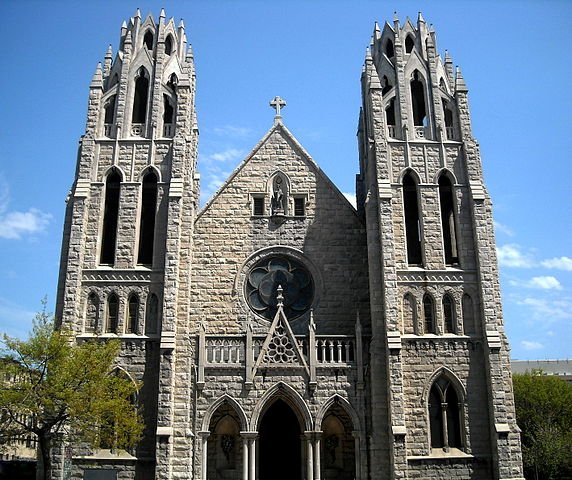A Brief History of the Catholic Church during the Middle Ages
The Roman Catholic Church, the largest denomination of Christians worldwide, has a glorious history as the church of Jesus Christ and the sole Christian Church in the West during the high and late Middle Ages (1054-1550 AD). Explore the history of the Roman Catholic Church before the Reformation in this brief guide.

Early Christianity Splits and Forms Roman Catholic Church
In the crumbling Roman Empire, the Christian Church struggled to maintain unity between East and West. When the Eastern half of the Roman Empire fell (circa 400 AD), the pope became the spiritual and political leader for Western Europe.
The patriarch of Constantinople served as head of the Eastern Orthodox Church in Byzantium. Diversity in thought and practice, physical distance between East and West, invasions from outsiders, and desires for autonomy tore the Church apart in a separation known as the East-West Schism or Great Schism in 1054. The Roman Catholic Church became known as the Church of the West, and the Orthodox Church the Church of the East.
Medieval Society and the Catholic Church
Western Europe suffered greatly during the Dark Ages (400-1000 AD). After the fall of Rome, people lost running water, military protection, and clear political leadership. Bands of raiders, the infamous Germanic tribes as well as Vikings and Mongols, constantly raped and pillaged.
In the midst of darkness, the Catholic Church offered Europe hope. Early missionaries, such as St. Patrick of Ireland, St. Augustine of Canterbury, and St. Boniface of Germany spread Christianity throughout Western Europe and with it political connections with Rome, the seat of the pope. The Benedictines, a religious order, founded monasteries that offered the modern day equivalent of social services- health care, food, and protection- as well as education to future priests and scholars. Entire communities poured hundreds of years of time and money into magnificent cathedrals such as Notre Dame de Paris to honor God and the Church.
Rise of the Pope During the Middle Ages
By 1000, most of Western European society followed the Pope's command. Kings and knights heeded Pope Urban II's plea in 1095 and embarked on the first of many crusades to regain the Holy Lands of Palestine from Muslim control. The Pope approved the marriages of kings and queens as well as new monastic orders for service to the Church and new doctrines for teaching her believers.
Bishops and abbots, serving the Pope, controlled much of the land and power in medieval land. Apart from towns and cities, run by guilds of craftsmen, and lands owned by local kings and noblemen, Church officials held much political as well as religious power in Europe.
Why the Catholic Church Didn't Split Before the Reformation
The rise of universities such as the University of Paris and Oxford University during the Middle Ages created a movement of new scholarship in the church, explaining everything through the lens of previously held Church doctrine. Great thinker theologians like St. Thomas Aquinas (1225-1274) and St. Bonaventure (1221-1274) enhanced the Church's teaching and thought with answers to questions about God, life, and faith.
Though some believers challenged the Church's teaching and practice during the Middle Ages, the majority founded new monastic communities to preserve their diversity. St. Bernard of Clairvaux' passionate preaching against the wealth of Benedictine monasteries inspired the Cistercian Order (1098). St. Francis of Assisi's call to serve the poor founded the Franciscans, a group of mendicants, or wandering monks (1223). Before 1500, no serious widespread challenge to the Catholic Church's authority threatened schism, or a split, within the Church in Europe.
Middle Ages Influences Catholic Church Today
The medieval Catholic Church's beliefs, worship, and structure was very similar to what's found in a modern Catholic parish today. Until Vatican II (1962-1965), the Catholic Church worshipped and prayed in Latin, the language of the Roman Empire. Priests, Catholic ordained ministers, began practicing celibacy by papal decree in the 1000s. The current liturgy of the Mass, the service order for Catholic worship, dates from the Middle Ages, as does the practice of devotion to the saints and the Blessed Virgin.
The Roman Catholic Church split from the Orthodox Church during the East-West Schism of 1054 but survived and thrived as the Church that served European believers during the Middle Ages and set the stage for the reformation in early modern Europe.
Thank you. Good history. I am adding it to my article.
Thank you for the good story...